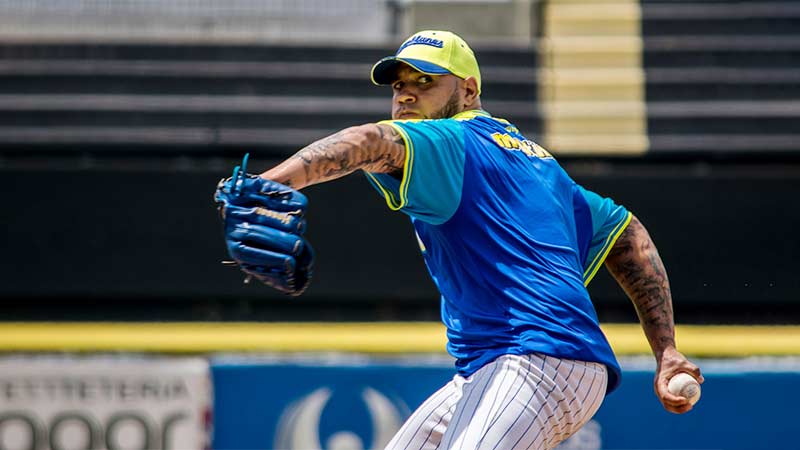Baseball is about to undergo a significant transformation with the introduction of the three-batter minimum rule for pitchers starting in the 2020 MLB season.
This rule mandates that a relief pitcher must face at least three batters or pitch until the end of a half-inning, unless an injury or illness occurs.
This change aims to quicken the pace of play and reduce the length of games by limiting the number of in-game pitching changes.
You might be wondering how this will affect the game you love. Imagine fewer interruptions during those crucial final innings, creating a more seamless and engaging experience.
With managers and players already gearing up to adapt, expect to see new strategies and tactics unfold on the field. This rule change could be just what baseball needs to keep you on the edge of your seat from the first pitch to the last.
Overview of the Three Batter Minimum Rule
The “Three Batter Minimum” rule, introduced in MLB from the 2020 season, requires a pitcher to face at least three batters or pitch until the end of a half-inning before being replaced, unless the inning concludes before the pitcher faces three batters.
Explaining the Rule
The three-batter minimum rule mandates that relief pitchers must face at least three batters or finish a half-inning before being replaced. This rule applies unless the pitcher sustains an injury, which is verified by the umpire.
The primary aim is to speed up the game by minimizing the frequency of pitching changes, which often prolong innings. Teams benefit from this rule through more streamlined games, reducing downtime caused by constant switches.
This significant change influences managerial decisions and on-field tactics, ultimately impacting how the game is played.
Origins and Implementation
The three-batter minimum rule in Major League Baseball was introduced before the 2020 season as part of efforts to enhance game pace and entertainment value. This rule aimed to create a quicker, more engaging experience for modern audiences.
Extensive collaboration among league officials, team managers, and players was necessary for its fair and effective integration. As teams adapted, new strategies emerged, highlighting flexibility and innovation in response to the evolving framework of MLB games.
Impact on Game Strategy
The implementation of the Three Batter Minimum rule has significantly impacted game strategy in Major League Baseball. Here are some of the key effects:
Effects on Pitching Changes
The three-batter minimum rule changes how managers handle pitching changes by requiring pitchers to face at least three batters or finish an inning, making single batter matchups less viable.
This shift promotes the use of versatile pitchers who can handle both left-handed and right-handed batters. Consequently, managers must strategize more effectively, balancing pitch counts and forecasting inning flows to optimize pitcher usage.
Impact on Game Pace and Duration
The three-batter minimum rule aims to improve game pace and reduce overall duration by limiting pitching changes, consequently minimizing time-consuming breaks.
According to MLB data from 2023, the rule had a noticeable effect on game pace by reducing mid-inning pitching changes, leading to a more seamless and engaging experience for fans.
Additionally, it introduces a strategic element for managers, as each pitching decision carries more weight, potentially maintaining the desired pace and keeping game duration within a more watchable timeframe.
Player and Coach Reactions
Player and coach reactions to the Three Batter Minimum rule have been mixed, with opinions varying depending on individual perspectives and team strategies. Here are some common reactions:
Support and Criticism Within the MLB
Players and coaches have had mixed reactions to the three-batter minimum rule. Some support it, arguing that it speeds up the game and makes it more interesting for fans.
For instance, supporters claim the rule reduces the number of time-consuming pitching changes that can slow down the game’s pace. On the other hand, critics believe that the rule limits managerial flexibility and strategy.
For example, some pitchers specialize in getting out one specific type of batter, and the rule forces these pitchers to face multiple batters, which can be unfavorable.
Adaptations by Teams and Players
Teams and players have had to adapt their strategies to adhere to the new rule requiring pitchers to face at least three batters. Managers now prioritize pitchers who can effectively pitch to both left-handed and right-handed batters, emphasizing versatility.
Players have adjusted their mental and physical preparation, changing their game plans and stamina management. Managers, like Colorado Rockies’ Bud Black, recognize the need to adapt while acknowledging the challenge it poses to traditional baseball strategies.
Comparison to Other MLB Rules
Comparing the Three Batter Minimum rule to other rules in Major League Baseball can shed light on its significance and impact. Here’s a brief comparison:
Similar Game-Pacing Rules
MLB has implemented various rules to improve the pace of play. The pitch clock imposes a 20-second limit between pitches, aimed at shortening game durations. Teams seeing benefits include fewer prolonged innings and faster game conclusions.
In 2015, MLB introduced a rule limiting mound visits to six per game, excluding injury or equipment issues, to reduce game interruptions. Instant replay reviews, while enhancing umpiring accuracy, have a maximum time limit of two minutes per review to maintain game flow.
Unique Aspects of the Three Batter Minimum Rule
The three-batter minimum rule differentiates itself by directly influencing in-game strategy. Unlike the pitch clock or mound visit limits, this rule dictates that a pitcher must face a minimum of three batters or pitch to the end of a half-inning.
Situational pitching decisions like bringing in a specialist solely for one batter become restricted. Managers often must decide whether to leave a struggling pitcher in or risk burning through bullpen arms in later innings.
While other rules primarily target time management, this one impacts strategic depth and decision-making within the game.
Frequently Asked Questions
When was the three-batter minimum rule implemented in MLB?
The three-batter minimum rule was implemented during the 2020 MLB season as part of efforts to improve game pace and fan engagement.
How has the three-batter minimum rule impacted game strategy?
The rule has significantly influenced in-game strategy, as managers must now consider the versatility of pitchers and the potential impact on the game’s flow and depth.
What are some other MLB rules aimed at improving game pace?
Other MLB rules aimed at improving game pace include the pitch clock and mound visit limits. Unlike the three-batter minimum, these rules primarily focus on reducing downtime rather than directly influencing in-game strategy.
How do players and coaches feel about the three-batter minimum rule?
Reactions are mixed. Some support the rule for enhancing game pace and fan engagement, while others criticize it for limiting managerial flexibility.
Is the three-batter minimum rule in effect during the postseason?
Yes, the three-batter minimum rule applies during the postseason, with exceptions for injuries and illnesses.
Conclusion
The three-batter minimum rule marks a significant shift in MLB’s approach to game strategy and pace. While it brings both support and criticism, its impact on the sport is undeniable.
Managers now face the challenge of adapting their strategies, and pitchers need to be more versatile than ever. As the MLB continues to evolve, this rule stands out as a bold move to balance game speed and strategic depth.
Whether you’re a fan or a player, the three-batter minimum rule is here to stay, shaping the future of baseball in intriguing ways. Its long-term effects will be closely monitored, determining how it may influence pitching careers and team dynamics.
As we watch the season unfold, baseball enthusiasts eagerly await to see how this rule adapts and integrates into the fabric of the game.








Pat Bloom